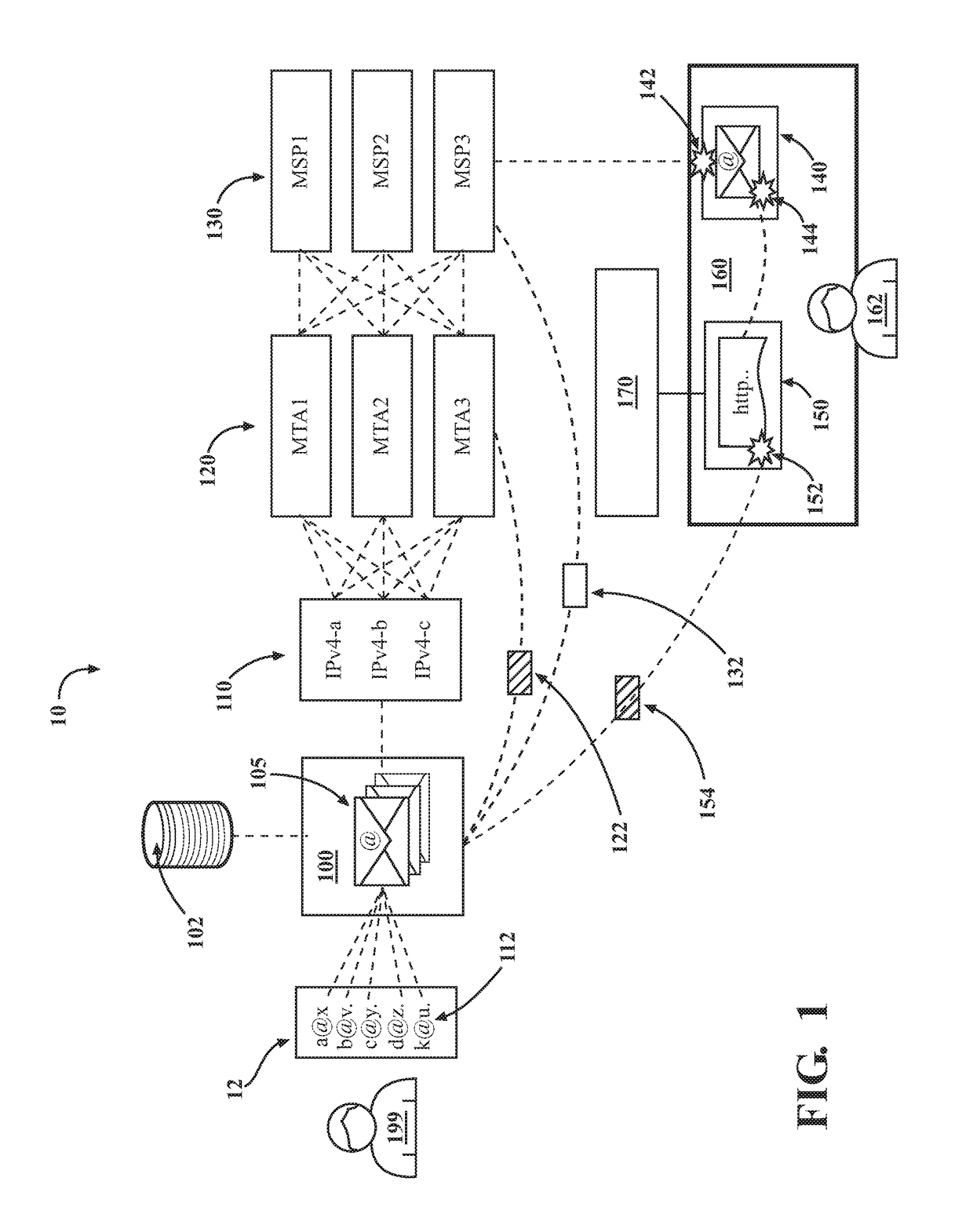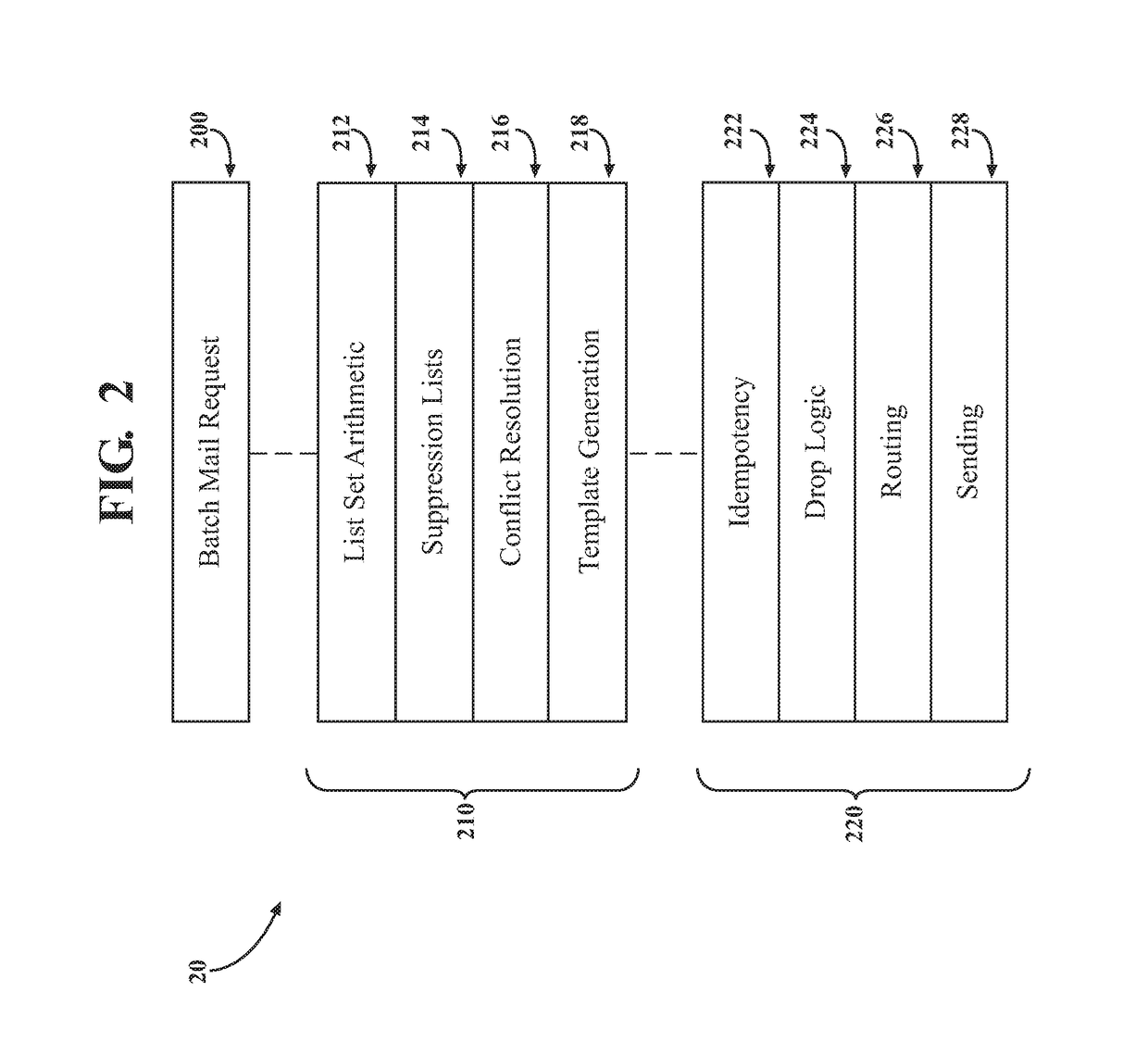Quality-based routing of electronic messages
a quality-based routing and electronic message technology, applied in the field of automatic processing of electronic messages, can solve the problems of system failure to account for various factors, preventing recipients from receiving valuable electronic messaging content, etc., and achieve the effect of minimizing the risk and maximizing the number of ip addresses
- Summary
- Abstract
- Description
- Claims
- Application Information
AI Technical Summary
Benefits of technology
Problems solved by technology
Method used
Image
Examples
Embodiment Construction
[0043]As stated, current electronic message delivery systems and methods have significant drawbacks and limitations. The present disclosure resolves problems and overcomes limitations of the prior art, summarized in the exemplary preferred embodiments below and covered by the scope of the amended claims. The exemplary embodiments and illustrations are intended to convey the inventions but are not intended to be exhaustive or exclusive, as those skilled in the art will appreciate numerous equivalent or alternate implementations of the present notions upon review of this disclosure.
[0044]In embodiments, electronic message management systems, such as electronic email, text, messaging, and the like may provide benefits to email users, such as enterprises, marketers and other users who use email lists for business and other purposes, by managing email activity (e.g., for bulk email campaigns all the way down to individual emails) end-to-end from creation of the email through its life-cyc...
PUM
 Login to View More
Login to View More Abstract
Description
Claims
Application Information
 Login to View More
Login to View More - R&D
- Intellectual Property
- Life Sciences
- Materials
- Tech Scout
- Unparalleled Data Quality
- Higher Quality Content
- 60% Fewer Hallucinations
Browse by: Latest US Patents, China's latest patents, Technical Efficacy Thesaurus, Application Domain, Technology Topic, Popular Technical Reports.
© 2025 PatSnap. All rights reserved.Legal|Privacy policy|Modern Slavery Act Transparency Statement|Sitemap|About US| Contact US: help@patsnap.com



